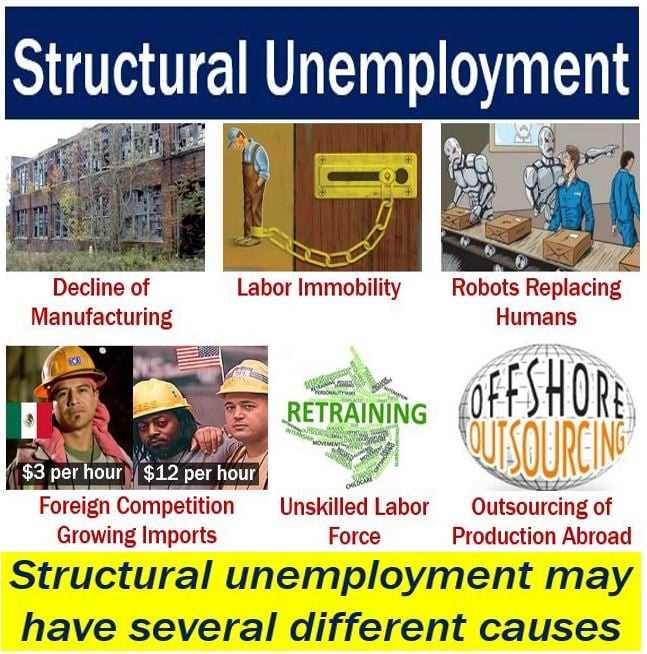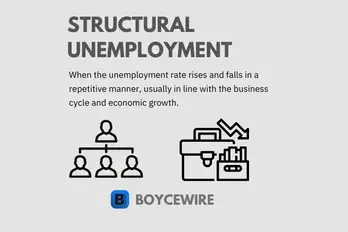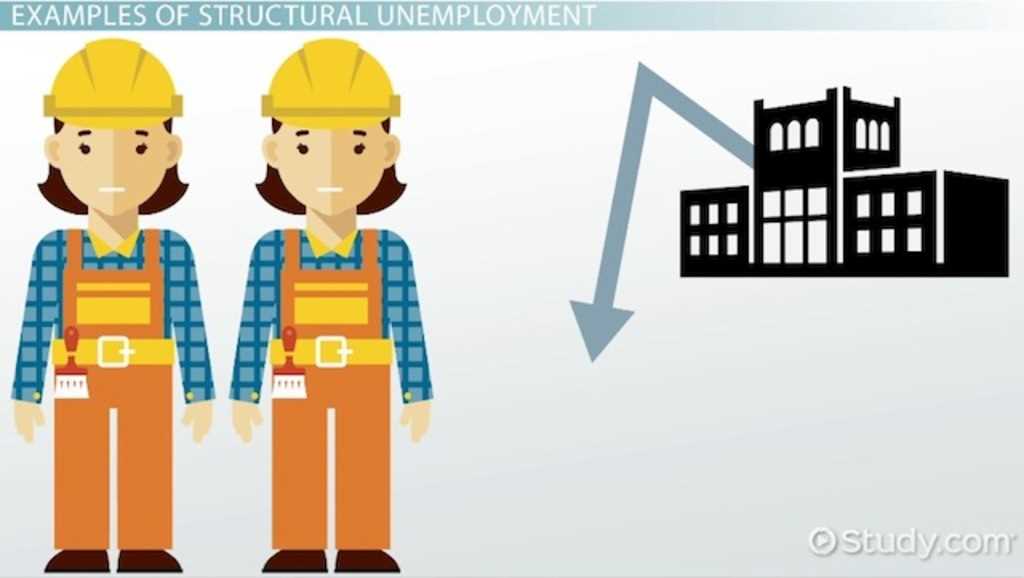Definition and Overview
Structural unemployment is a type of unemployment that occurs as a result of changes in the structure of an economy. It is characterized by a mismatch between the skills and qualifications of the unemployed workers and the available job opportunities. Unlike cyclical unemployment, which is caused by fluctuations in the business cycle, structural unemployment is a long-term phenomenon that can persist even during periods of economic growth.
Structural unemployment typically arises due to various factors, such as technological advancements, changes in consumer preferences, globalization, and shifts in the composition of industries. These changes can lead to the decline or obsolescence of certain jobs or industries, resulting in a surplus of workers with specific skills and a shortage of jobs that require those skills.
One of the key features of structural unemployment is the existence of a skills gap. This means that there is a mismatch between the skills and qualifications of the unemployed workers and the skills required for available job openings. For example, advancements in technology may require workers to have more advanced technical skills, while workers who were previously employed in industries that have become obsolete may not possess these skills.
Addressing structural unemployment requires a combination of policies and strategies. These may include investing in education and training programs to help workers acquire the skills needed for available job opportunities, promoting entrepreneurship and innovation to create new industries and job openings, and implementing labor market reforms to facilitate job matching and mobility.
| Key Points |
|---|
| Structural unemployment is a type of unemployment that occurs due to changes in the structure of an economy. |
| It is characterized by a mismatch between the skills of unemployed workers and the available job opportunities. |
| Causes of structural unemployment include technological advancements, changes in consumer preferences, globalization, and shifts in industries. |
| Structural unemployment can have economic and social implications, including decreased productivity and increased inequality. |
| Addressing structural unemployment requires a combination of policies, such as investing in education and training programs and promoting entrepreneurship. |
Causes of Structural Unemployment

Structural unemployment is caused by various factors that affect the supply and demand of labor in an economy. These factors can include:
- Technological advancements: The introduction of new technologies can lead to the automation of certain jobs, making them obsolete and reducing the demand for labor in those industries.
- Globalization: The increasing integration of economies and the outsourcing of jobs to countries with lower labor costs can result in job losses in certain sectors of the economy.
- Changes in consumer preferences: Shifts in consumer preferences can lead to a decline in demand for certain products or services, causing job losses in industries related to those products or services.
- Education and skills mismatch: A lack of relevant skills or education can result in a mismatch between the skills of the workforce and the requirements of available jobs, leading to unemployment.
- Government policies: Certain government policies, such as minimum wage laws or labor market regulations, can create barriers to employment and contribute to structural unemployment.
It is important to note that structural unemployment is a long-term phenomenon that requires structural changes in the economy to address. These changes may involve retraining programs, education reforms, and policies that promote job creation in emerging industries. Additionally, addressing structural unemployment may require a combination of macroeconomic policies, such as fiscal and monetary measures, to stimulate overall economic growth and create new job opportunities.
Examples of Structural Unemployment

Structural unemployment occurs when there is a mismatch between the skills and qualifications of workers and the available job opportunities in the economy. This type of unemployment is often long-term and can have significant impacts on individuals and the overall economy. Here are some examples of structural unemployment:
-
Technological advancements: As technology continues to advance, certain jobs become obsolete, leading to structural unemployment. For example, the rise of automation and artificial intelligence has resulted in the displacement of many manufacturing and assembly line workers.
-
Globalization: The globalization of markets has led to increased competition and outsourcing of jobs to countries with lower labor costs. This has resulted in structural unemployment in industries such as manufacturing and call centers.
-
Changes in consumer preferences: Shifts in consumer preferences can also contribute to structural unemployment. For example, the decline in demand for physical media such as CDs and DVDs has led to job losses in the music and video rental industries.
-
Industry restructuring: Structural unemployment can occur when industries undergo significant restructuring. This can be due to changes in market conditions, government regulations, or shifts in technology. For example, the decline of coal mining has resulted in structural unemployment in regions that were heavily dependent on this industry.
-
Education and skills gap: Structural unemployment can also be caused by a mismatch between the skills and qualifications of workers and the requirements of available jobs. This can occur when there is a lack of access to quality education and training programs, or when the skills demanded by employers are different from those possessed by workers.
These examples highlight the diverse causes of structural unemployment and the challenges it poses for individuals and the economy. Addressing structural unemployment requires a combination of policies that promote education and skills development, support industries undergoing restructuring, and encourage innovation and adaptation to technological advancements.
Implications and Solutions

Structural unemployment can have significant implications for both individuals and the overall economy. When individuals are unable to find employment due to structural factors, they may experience long periods of unemployment and financial hardship. This can lead to a decrease in their overall well-being and quality of life.
For the economy as a whole, structural unemployment can result in a decrease in productivity and economic growth. When individuals with specialized skills are unable to find employment in their field, their talents and expertise go underutilized. This can lead to a loss of potential output and hinder innovation and development.
Addressing structural unemployment requires a combination of policies and strategies. One approach is to provide retraining programs and educational opportunities to help individuals acquire new skills that are in demand in the labor market. This can help bridge the gap between the skills individuals possess and the skills employers are seeking.
Another solution is to promote entrepreneurship and small business development. By creating an environment that supports the growth of new businesses, more job opportunities can be generated. This can help absorb some of the unemployed individuals and reduce the overall level of structural unemployment.
Additionally, governments can implement policies that encourage investment in industries that are experiencing growth and demand for skilled workers. This can help stimulate job creation and reduce the imbalance between the skills individuals possess and the skills employers need.
Finally, fostering collaboration between educational institutions and businesses can help ensure that the skills being taught align with the needs of the labor market. By providing students with relevant and up-to-date training, they will be better equipped to meet the demands of the job market and reduce the prevalence of structural unemployment.

Emily Bibb simplifies finance through bestselling books and articles, bridging complex concepts for everyday understanding. Engaging audiences via social media, she shares insights for financial success. Active in seminars and philanthropy, Bibb aims to create a more financially informed society, driven by her passion for empowering others.
